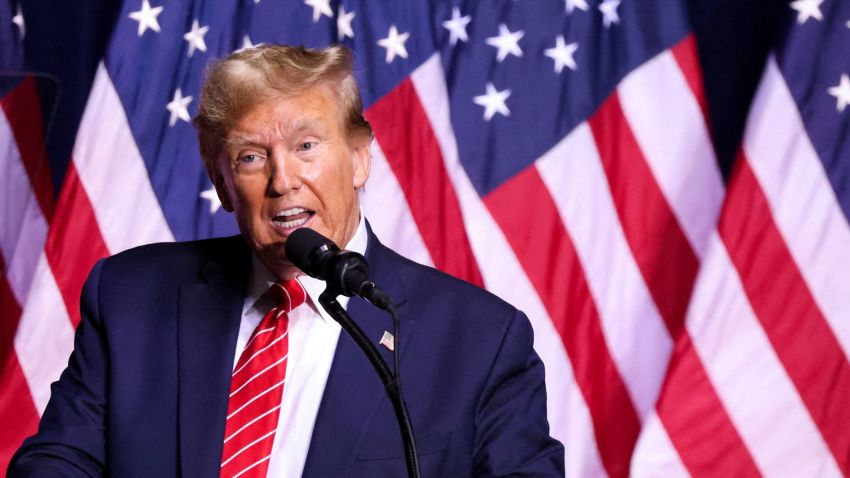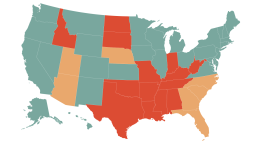Editor’s Note: W. James Antle III is executive editor of the Washington Examiner magazine and author of “Devouring Freedom: Can Government Ever Be Stopped?” The views expressed in this commentary are his own. View more opinion on CNN.
Former President Donald Trump clarified his position on abortion in the first presidential election since the reversal of Roe v. Wade, which owed in part to the three justices he appointed to the Supreme Court.
Trump’s position — mainly leaving the issue to the states to “determine by vote or legislation, or perhaps both,” expecting a wide variety of abortion laws and “whatever they decide must be the law of the land” — divides the Republican Party and could end up pleasing no one. The former president and presumptive 2024 Republican nominee wants to simultaneously take credit for Dobbs v. Jackson Women’s Health Organization while promising to shield voters who do not reside in pro-life states from its consequences.

Trump subsequently ruled out signing a “federal abortion ban,” as his opponents are describing all national anti-abortion legislation, entirely. Pro-life activists would be correct to deem that a bridge too far. But it should be noted that in practice, unless Senate Republicans win the majority and eliminate the legislative filibuster — something they are less likely to do than their Democratic counterparts — anything that would actually reach Trump’s desk would need to have bipartisan support. That probably wouldn’t be a 15- to 20-week ban, much less something earlier. And if it was, you’d have to wonder if Trump would actually veto bipartisan pro-life legislation.
Both President Joe Biden’s reelection campaign and pro-life activists have already denounced Trump’s vow to leave abortion law to the states.
Still, Trump has a point. With Roe, the Supreme Court attempted to impose a uniform national abortion policy without democratic participation by the voters or their elected representatives. Dobbs did not attempt to do the same. It merely restored state and federal lawmakers, and ultimately the voters who choose them, as the ultimate arbiters of abortion policy rather than the court.
If you are going to allow abortion to be settled by the voters, then you have to care about public opinion on the issue. It is impossible to enact successful and sustainable legislation restricting abortion if it lacks popular support. Since Dobbs, Republicans have experienced numerous abortion-related setbacks at the ballot box. Recent court rulings have made abortion a top issue in Arizona and Florida, two of the states that will help decide the presidential race. Trump currently leads in Arizona and Florida polls.
This is not just an issue for Republican electoral prospects, though obviously, if you are going to let elected officials shape abortion policy, abortion opponents will need like-minded candidates who are able to win elections. It ultimately speaks to whether the pro-life cause will prevail. Overturning Roe was just the first step.
Winning over the electorate is critical. Pro-lifers have not accomplished this feat yet. Recent election results and Gallup polling suggest people with nuanced views about abortion have shifted to the pro-choice side.
This wasn’t always the case, and even now, support for legal abortion in every circumstance remains a minority position. In the final three decades of Roe, 1992’s Casey v. Planned Parenthood decision, in which conservatives on the Supreme Court failed to overturn the 1973 landmark decision, expanded lawmakers’ ability to restrict abortion.
This period of time saw a reduction in abortions and intermittent gains for the pro-life position in polls as the pro-choice side appeared to shed middle-ground voters in debates over late-term abortion procedures and other matters.
Trump is trying to restore those political conditions. “It must be remembered that the Democrats are the radical ones on this position because they support abortion up to and even beyond the ninth month,” he said. (Democrats generally dispute this characterization of their viewpoint.)
While Trump has held a variety of abortion stances over the years and left some uncertainty as to where he would come down in this campaign, his current position is consistent with most of what he has said in the lead-up to the primaries, where his main challenger, former UN Ambassador Nikki Haley, took a similar line.
I agree with the pro-life activists who say this does not go far enough in protecting fetal life and share their sense of urgency. But an incremental approach, coupled with more attempts to persuade a divided public, may be the best path forward under the prevailing political conditions.
Trump will deservedly get some benefit of the doubt due to his role in ending Roe. He now has a record from having served a term as president, during which he delivered more results than some Republicans who are regarded as being purer or more sincere in their opposition to abortion.
Moreover, if Democrats hold the Senate without filibuster defenders Sens. Joe Manchin and Kyrsten Sinema, while retaining the White House and capturing the House, they could pass legislation codifying Roe and arguably push abortion policy further to the left.
It took nearly 50 years to overturn Roe. A pro-life political culture is unlikely to be built in a single presidential election. But ground can be lost, endangering not just Republican candidates but innocent lives as abortion foes find themselves spread too thin while battling over multiple fronts.
Viewed as a starting point rather than the endgame, Trump’s compromise has a chance to be good politics for Republicans in this campaign. It could also be a sound strategy for a pro-life movement seeking to capitalize on and prolong the post-Roe moment.
This piece was updated to reflect Trump’s comments on federal abortion legislation.




